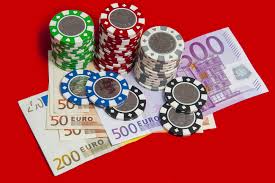Stephendpalmer – Pot odds are the odds equal the ratio of the pot size to the size of the bet you must call. To determine the pot odds, simply take the amount of money that is already in the pot and divide that by how much you need to put in to call. Understand the pot odds helps you to determine whether or not you should call when you are on a draw. Let’s say you are in a game that six people seethe flop for $5; there is $30 in the pot. On the flop, there is a $15 bet and now you only have $15 in the pot. If you are playing limit, the pot odds are $45 to $15, or about 3 to 1. In this situation you are about an 80 percent favorite to win the hand.
Implied Odds
Implied odds represent how much money you might be able to make if you successfully hit a drawing hand. On the other words, implied odds are simply future pot odds. If you are pretty sure that your opponent will bet another amount of money into the pot in the future, you should use the implied odds before deciding whether to call a bet or not. Before you use the implied odds, make sure you have a good understanding of your opponent’s action. Will he bet out and then call a raise if the card you need hits? If you fail to read your opponent, it may cost you a lot especially in the no limit game. I will cover the four different of players in the later chapter.
Call or Fold
Let’s say you are holding J♣T♣, and the flop brings a Q♥8♣2♥. There is $30in the pot, your opponent bets $10, and there are three callers when it gets to you. Currently your pot odd is $70:$10, and you have a gut shot straight draw, any nine will make your hand. You are 11:1 against completing your hand on the turn while getting only 7:1 on a call. From what we have learned, you should only call your hand if you believe there is another $40 bet when the turn show. You must have good understanding of your opponent when you try to use the implied odds. Therefore, if you are new to pokerlegenda, don’t over use that until you are comfortable with it.
Here are some examples, make sure you understand it all if you are new to poker.
There is a $100 bet on the flop, and one person calls. There is $30 in the pot, and one person raises to $30. Blinds are $1/$2 on the button, and one person raises to $30. There is $90 in the pot on the flop, and one person calls. On the turn a 9 drops, and the one person that bet out cold eats the $30 chips and ower than he will be $90 richer. There is $130 in the pot on the turn, and one person calls.
Before the turn you are $30 in the pot, now you are $20 in the pot. The turn brings a 9 and you lose all the leverage you did have, freeze the hand immediately. Why? The turn is where many players get manifold benefits. Let’s say a player got all six and dropped, he is done. He literally has no more money in the pot. Now, a player that was behind, but not completely, drops and another player that was ahead, calls. The thing is, the player that was ahead, could very well have had the 9 and had he not made a two pair, he would have been at least in the hand.
The turn change reversed your situation. You played the hand exactly the way you should have played it. Your hand was just a 9 to make a straight, and that is what you did. You made a preflop raise of $30, and your opponent bet out $60, a good bit more than your original raise. Your hand was obviously weaker so you folded.
The whole story is a lot easier to relate to if you think about it the other way. Your multi made your hand, your opponent made a larger raise, you call, and a Jack hits the turn for 2 pair. You now have nearly no chance of winning the hand, unless you catch a 2 and win a big pot. In the instance that you do catch a 2, you will probably only win the pot on the flop.
The one time when you do catch a 2, you are almost never going to win a big pot. In the instance that you do flop a 2 and there are multiple players in the pot, you will probably only win the pot on the flop.
